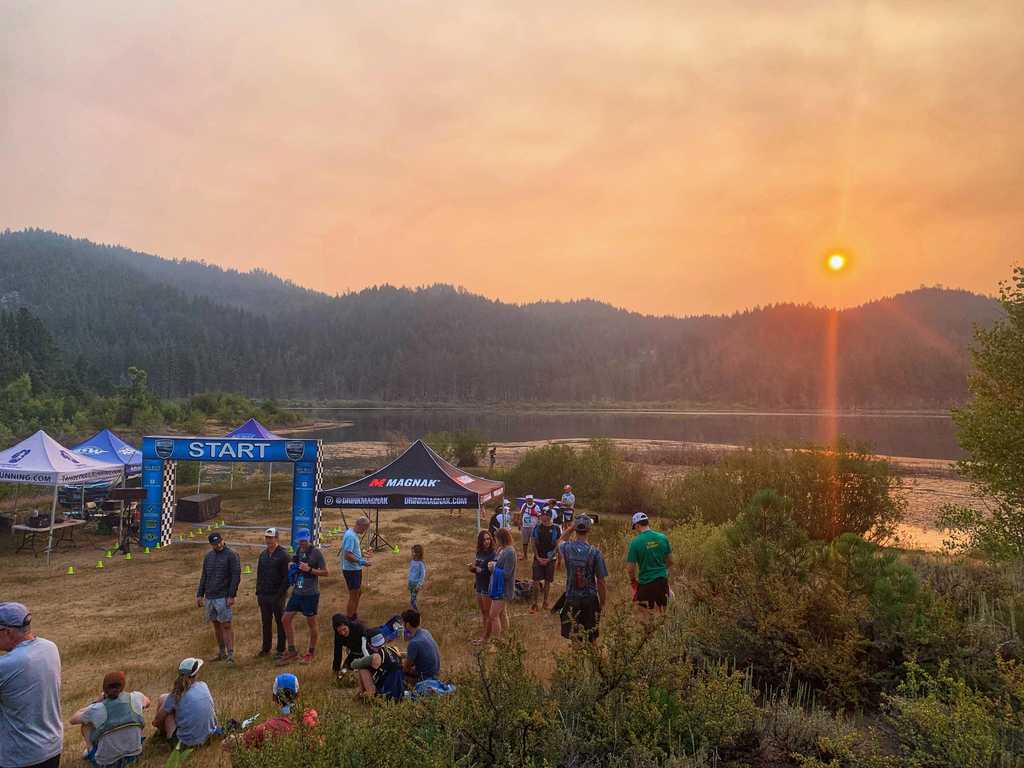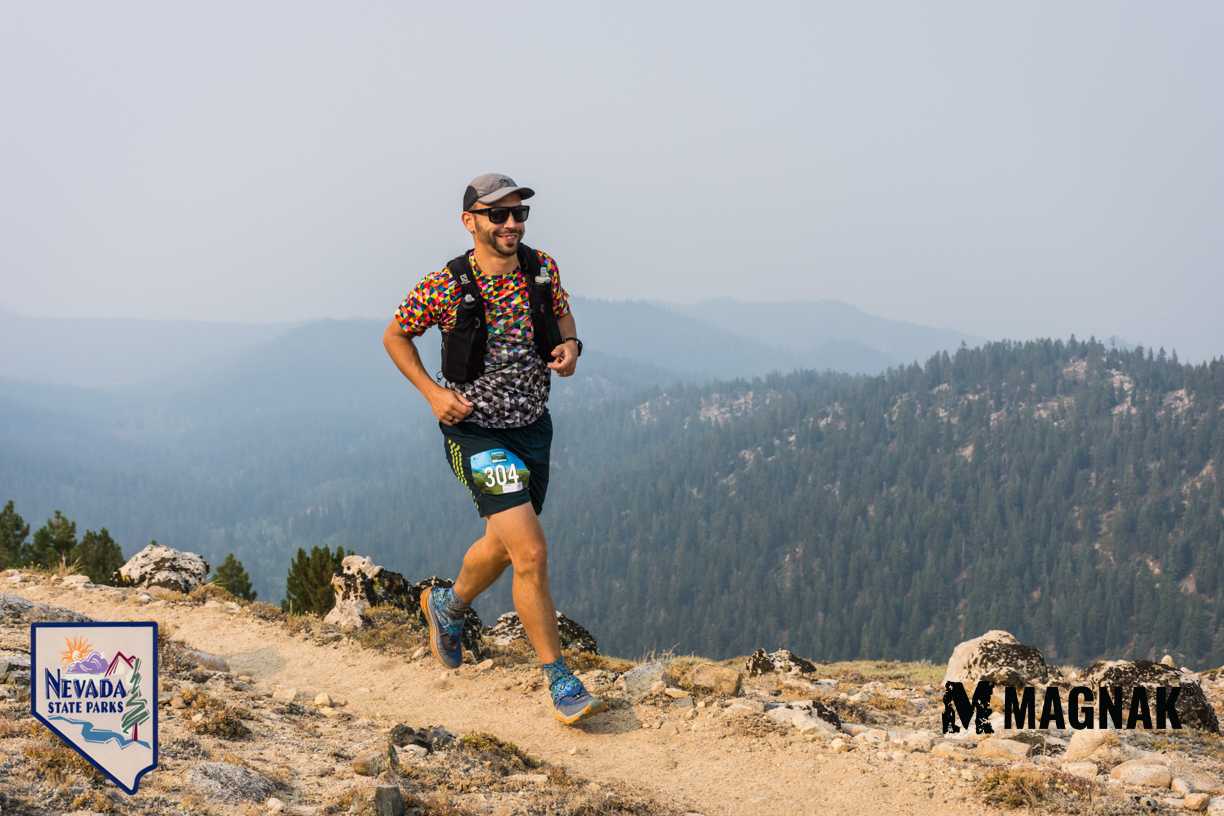I ran my first 50k! The official result was 6:26:22, but that's just a minor detail in the grand scheme of this story.
I signed up for this race on January 4th. I had been wanting to step up to the Ultra distance for a bit; from reading race reports and starting to follow the action from some of the local running groups it sounded like something that would be up my alley. After signing up for the race, I also signed up for a 20 week training program from Uphill Athlete that looked challenging but doable. The first day of training was to be March 30th. Until then, my casual running and biking became my base building, with a small motivational boost of having a big goal on the horizon.
Once the formal training kicked off, a few things were key to staying on target: managing effort levels, the time commitment, and everything else that happens while running for a long time.
Up until this year, I was very familiar with the "no pain, no gain" dogma. But while I was ready to toughen up as much as needed, I had also recently been tuning to a newer approach along the lines of working smarter, not harder. This TED talk about normal people training like world-class athletes by Stephen Seiler made for a great intro to the concept of planning for the bulk of the training volume to be at a relatively easy effort level, and leaving the hard days to be few and far between. Even better, my training plan started with a Heart Rate Drift test to establish just exactly where this line was - at a heart rate of about 148bpm for me. This was the magic number for effort, just needed to find how to manage my effort to stay right under that threshold.
I followed this approach with great results! Over the weeks, my effort stayed low but my speeds started to improve; while I was properly recovering from long runs, and keeping my chances of injury very low.
As the training runs got longer and longer, scheduling the sessions became an important thing in my weekly planning. My approach was to make the time, and not try to find it at some point. In other words, make a plan for when I'd be going for a run each day, and stick to it as much as possible. Fortunately for me, I have a lovely spouse who supported my crazy wishes of waking up before sunrise to head out for a run with nothing but a cup of coffee in the tank.
Since I signed up for a trail race, I figured I should do a fair amount of trail running to get ready. I discovered many new areas, and very quickly found magical moments to fall in love with: running between wildflowers, hearing and seeing wildlife, summiting a long climb, running on mountain ridges as a cool high-altitude breeze dries off the sweat. How I wish I had explored trails before! Without a doubt, trails will be destinations for future runs to come.
Some of my most epic runs were the long training sessions: Peavine, the Tahoe-Pyramid Bikeway (twice! The second one for an FKT on Verdi-Hirschadale-Verdi), Thomas Creek, the Duck Pass trail in Mammoth Lakes, discovering the Lower Lola Montez lake, Mount Lola, and from Donner to Squaw on the PCT.
So many Strava links! Let's get to the last one, and the race report for The Markette 50k. Official results are over here: https://tahoetrailrunning.com/wp-content/uploads/2021/08/m50all21.htm

On the morning of the race, the air quality was not good. Smoke from the Dixie fire in California was everywhere, could smell and even taste it. This was no surprise, as the smoke had been coming and going from the area for weeks.
While unhealthy, the smoke was just below the toxic thresholds, so the race was not suspended, and therefore I decided to go on as planned, and make the best of it. There were about 80 other people that decided the same, which made for plenty of company out on the trails.
My main strategy was to keep it in the eazy zone for the first 7 miles, the climb to Snow Valley Peak. Many other people were on the same plan, as we mixed power-hiking and running our way up the mountain. Quickly after the initial shuffle from the start line, I started making moves to pass people. As soon as I would see anyone ahead of me on the trail, I would speed up a bit to catch up, and then hang behind them in recovery pace while waiting for an optimal section (read: not uphill) to say hi and move past. This worked very well, and paid off towards the end when I wanted to walk, but I also didn't want anyone to catch up to me.
Nutrition is an important part of an endurance event, and I was again in benefit of having trained plenty in this area. I kept my hydration up with electrolytes, sodium, and had potato chips and watermelon at the aid stations. I had some manageable nausea, possibly from the air making my mouth feel like an unwashed old ashtray. I went through an entire package of chewing gum, a last-minute addition to my kit that definitely is now added to the packing checklist.
The great views promised by the course were definitely spoiled by the poor visibility from the smoke. The race would have been much more enjoyable in nice conditions. I tried my best to not get bummed out mid-run, and promised myself to come back to parts of the course that were new to me. There was a lot of talking to myself, and overall was in the moment of things, good and bad. The fluctuation of those good and bad things over 6+ hours were a fun challenge to step up to, and I have found valuable gratification in having found myself well prepared for it.
I found a deep joy in running around the mountains for my long training runs, and I long for more days where I refill my water bottle from an alpine lake. There will certainly be more of those. I will likely eventually sign up for another Ultra... perhaps even Marlette 50k in 2022.

